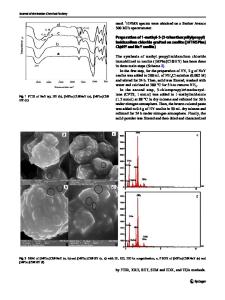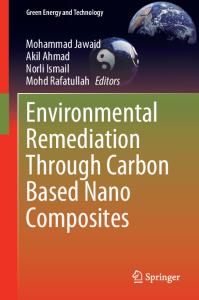Synthesis of the nano-magnetic ionic liquid based on caffeine and its catalytic application in the synthesis of xanthene
- PDF / 1,540,533 Bytes
- 16 Pages / 439.37 x 666.142 pts Page_size
- 46 Downloads / 363 Views
Synthesis of the nano‑magnetic ionic liquid based on caffeine and its catalytic application in the synthesis of xanthenes Masoumeh Salami1 · Ali Ezabadi1 Received: 7 March 2020 / Accepted: 28 July 2020 © Springer Nature B.V. 2020
Abstract In this research, a novel nano-sized cube-shaped magnetic ionic liquid based on caffeine was synthesized and characterized by various spectroscopic and analytical techniques including Fourier transform infrared spectroscopy, Raman spectroscopy, proton NMR (1H NMR), carbon-13 NMR (13C NMR), mass spectroscopy, thermal gravimetric analysis/differential thermal gravimetric analysis, elemental analysis, inductively coupled plasma analysis, X-ray diffraction, energy dispersive X-ray analysis, field emission scanning electron microscopy, and vibrating sample magnetometer. The nano-magnetic IL exhibited eminent catalytic activity in the synthesis of various xanthenes under solvent-free conditions. Keywords Magnetic ionic liquid · Xanthenes · Caffeine · Solvent-free conditions
Introduction Ionic liquids (ILs) are generally defined as a liquid electrolyte composed of organic cations and organic or inorganic anions [1]. These compound are attracting increasing interest from researchers as environmentally benign reaction media/catalysts/ reagents due to their remarkable and interesting properties such as the wide liquid range from cryogenic temperatures up to 100 °C, negligible vapor pressure, flame retardancy, high ionic conductivity, sizeable electrochemical window, unique solvation capabilities, recyclability, and design ability by appropriate modifications of cations or anions in structures [2, 3]. Magnetic ionic liquid (MIL) displays an unexpectedly strong response to an additional magnet allowing us to separate and reuse them easily [4]. Since magnetic ionic liquids were synthesized and reported by Hayashi and Hamaguchi [5], they * Ali Ezabadi [email protected] 1
Department of Chemistry, Faculty of Science, Islamic Azad University, Central Tehran Branch, Tehran, Iran
13
Vol.:(0123456789)
M. Salami, A. Ezabadi
have been an exciting and thriving area in IL research because of their multitasking performance in the field of catalytic reactions [6–12], solvent-effects [13–15], and separation processes [16–19]. The paramagnetic properties of MILs are induced by the anion, the cation or both. The most common paramagnetic ionic liquids are those that contain transition metal or lanthanide complexes in their anion structure [20]. Belonged to the oxygen-containing heterocycles, xanthene derivatives belong to oxygen heterocycles that exhibit a wide range of biological and pharmaceutical properties such as antiplasmodial [21], antibacterial [22], analgesic [23], antiinflammatory [24], antimalarial and inhibitory action toward typanothine reductase enzymes and chloroquine potentiating agent [24], antimicrobial [25], antioxidant [26], u-opiate agonist [27], and ant proliferative activities [28] besides others. In addition to pharmaceutical applications, these heterocyclic molecules
Data Loading...











